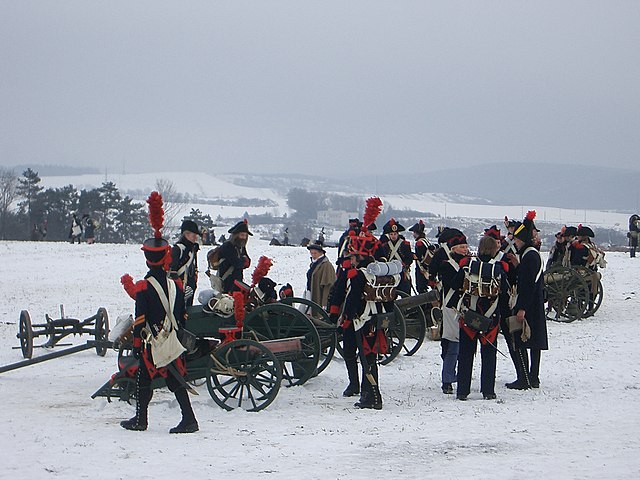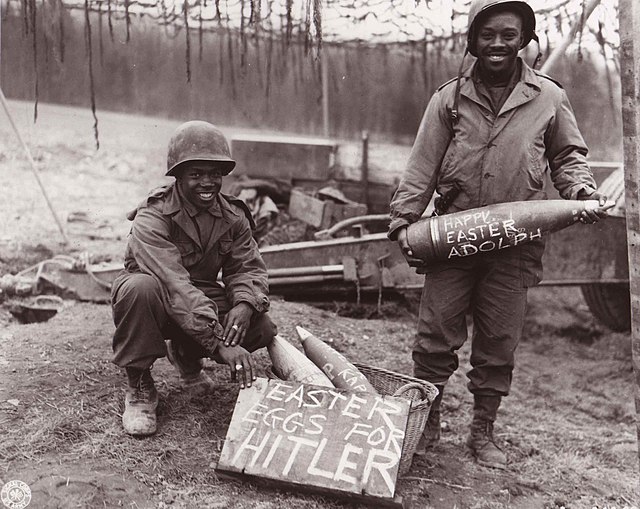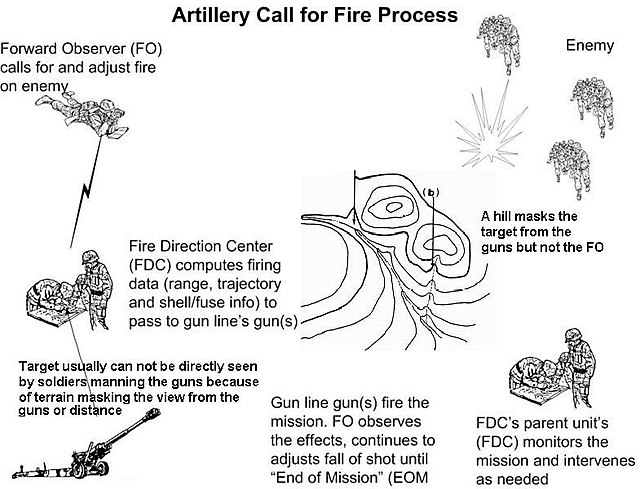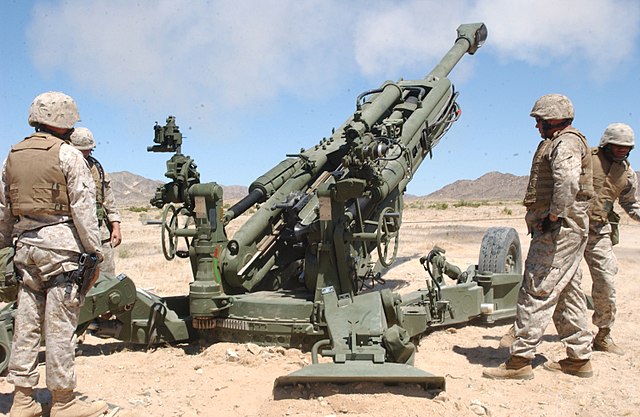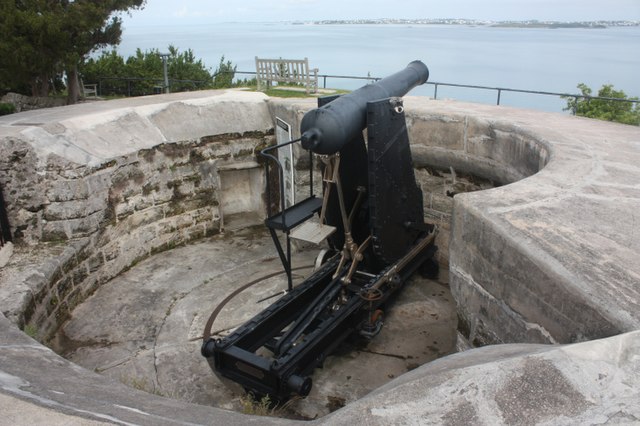Field artillery is a category of mobile artillery used to support armies in the field. These weapons are specialized for mobility, tactical proficiency, short range, long range, and extremely long range target engagement.
French Napoleonic artillery battery. Photo taken during the 200th anniversary reenactment of the battle of Austerlitz in 1805.
U.S. Army troops in Europe, spring 1945, with artillery shells labeled as "Easter eggs for Hitler".
An illustration of a bronze "thousand ball thunder cannon" from the 14th-century Ming Dynasty book Huolongjing. The cannon is an early example of pre-modern mobile battlefield artillery.
Calling in and adjusting artillery fire on a target visible to a forward observer but not to the soldiers manning the guns, themselves
Artillery are ranged weapons that launch munitions far beyond the range and power of infantry firearms. Early artillery development focused on the ability to breach defensive walls and fortifications during sieges, and led to heavy, fairly immobile siege engines. As technology improved, lighter, more mobile field artillery cannons developed for battlefield use. This development continues today; modern self-propelled artillery vehicles are highly mobile weapons of great versatility generally providing the largest share of an army's total firepower.
US Artillerymen fire-off an artillery round with the newly fielded M777 Lightweight 155-millimeter Howitzer
French soldiers in the Franco-Prussian War 1870–71
British 64 Pounder Rifled Muzzle-Loaded (RML) Gun on a Moncrieff disappearing mount, at Scaur Hill Fort, Bermuda. This is a part of a fixed battery, meant to protect against over-land attack and to serve as coastal artillery.
7-person gun crew firing a US M777 Light Towed Howitzer, War in Afghanistan, 2009

